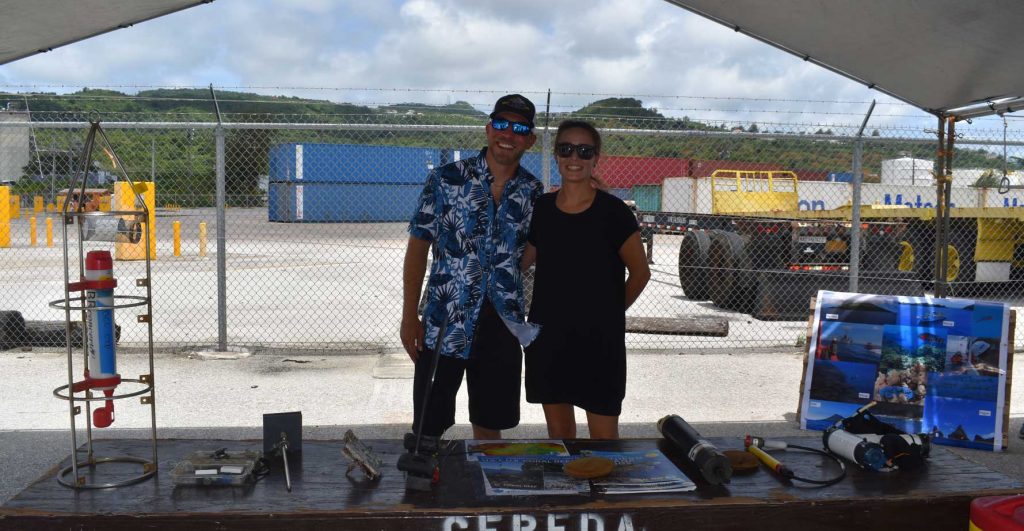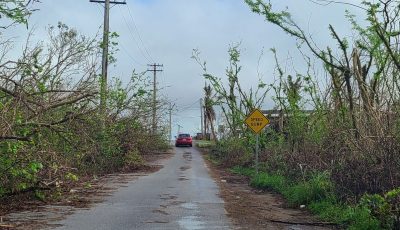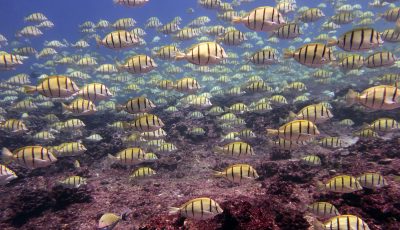NOAA ship holds tours before saying goodbye in August

Ocean and Climate Change team lead Ari Halperin and chief scientist Kaylyn McCoy smile for the camera, just before the tour of NOAA’s Rainier research vessel last Friday morning at the Charlie Dock in Puerto Rico. (CHRYSTAL MARINO)
Concluding their research on the CNMI archipelagos, a team of scientists from the National Oceanic and Atmospheric Administration held three tours of their research ship Rainier last Friday at the Charlie Dock of the Port of Saipan in Puerto Rico.
The first tour, which involved some lawmakers and other dignitaries in the CNMI, took the visitors on a look at the “bridge” where the NOAA equipment for ocean and seafloor mapping were held, a glimpse into the transportable recompression chamber system, where divers could receive medical attention even in remote areas, and an overall display of several research equipment and smaller research vessels.
According to Kaylyn McCoy, the chief scientist for the expedition, the Honolulu-based research team travelled throughout the CNMI island chain, observing and collecting data on reefs and the region’s seafloor, among other observations.
McCoy said that between their last research expedition in 2017 and the recent expedition in 2022, the research team did notice some improvement: There was less coral bleaching this year than in 2017, and even growth of more coral. Coral bleaching is when coral reefs die and turn white.
Based on data collected from NOAA’s 2017 tour, a 2018 reports from the National Coral Reef Monitoring program determined that the CNMI coral reef was in fair health. Now with newly acquired data from the 2022 tour on the Rainier, an updated version and assessment should be available soon.
The purpose of NOAA tours made to the CNMI is to collect and update data, assess the overall coral and reef health, and share gathered information with local oceanic management for the purpose of finding ways to best manage current coral reef resources.
Rainier’s commanding officer and captain, Hector Casanova, said that along with the coral and reef assessments, their team also mapped the ocean floor while travelling throughout the CNMI islands chain in order to update charts “There’s some places here that haven’t been charted since 80 years ago, so we are very excited to actually kind of be a part of this,” he said.
The Rainier has been conducting research in the CNMI since April. Having concluded their tour of the CNMI, the team is expected to leave in August with plans to return in 2025.



























